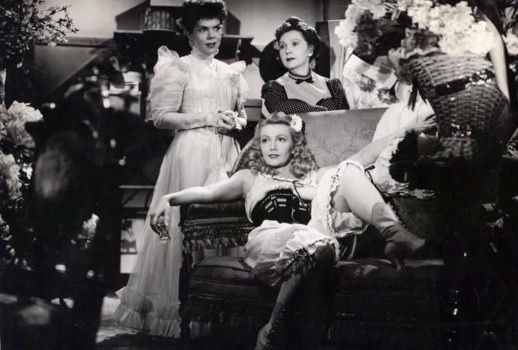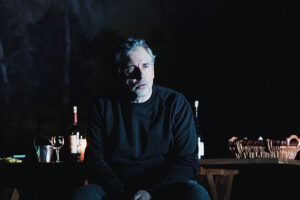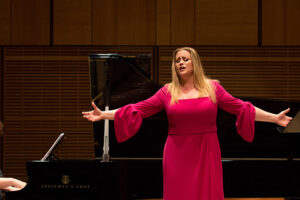

I put together a small sampler of well-known Viennese yodelers from the first few decades of the 20th century to give parterrians a small idea of the styles and voices common in those years. The selections are taken from Basilisk Records’ magnificent 23-CD collection of Austrian folk music from the years 1898-1951, compiled and edited by Ernst Weber.
When this set came out during the 90s, it was a revelation to me. It profoundly altered my perception of a whole range of Austrian classical music from Schubert and Strauss to Mahler and Schoenberg. The extensive liner notes in German and English offer a wealth of information and critical insight that would be hard to find elsewhere.
The first item on this playlist is sung by Ploni Pötzl, a darling of the Viennese variété. Though the height of her fame was right at the turn of the century, her roots lay in the 19th. The record was made sometime between 1901 and 1910. Singing in a brisk waltzing style, Pötzl’s “Lichtenthaler Mädl” strikes me as urbanely elegant–a performance that perhaps evoked for Viennese audiences the idolized Fiakermilli (in reality: Emilie Demel, 1848-1889) of a generation before.
The next song features a more rustic pair of Natursänger–Mina and Phillip Lambor. Their glory years, too, fell in the decade and a half before the First World War. Though their performance is labeled “Altwiener Jodler”, their singing is redolent of the fresh Alpine air. The recordings by them and Max Jauner reflect the style of music usually heard in the Heurigen, the wine gardens of the Viennese suburbs.
After that, a couple of selections by Jauner, one of the most frequently-recorded yodelers before the First World War. Born in 1861, he had already been a popular singer for decades by the time he was recorded. The Grinzinger Quartett, with whom Jauner appears, was one of the great instrumental folk ensembles of the period – a one-time competitor and eventual successor to the more famous Schrammel-Quartett. He is a fine artist, heard to good advantage in the Styrian song “Der Almaspitz”.
After “Der Almaspitz”, Jauner is joined by Jakob “Bäcken-Schakl” Schaffhausen for another Styrian song, “Steirer Bua”. Bäcken-Schakl was no mean yodeler in his own right, possessed of an impressive upper range.
Maly Nagl (1893-1977) was one of the yodeling divas who appeared on the scene in the 1920s. Her name may still be remembered by some parterrians. In her youth she was extraordinarily beautiful-according to Ernst Weber, Gustav Klimt wanted to paint her nude. Her early 78s find her not only in fresh voice, but with a soulful delivery that invests a traditional song like “Mutter, i bin verliabt” with many nuances and genuine pathos.
The final yodeler of this selection is Erna Berger, the Natursänger (not to be confused with Erna Berger, the operatic soprano). Not much is known about her outside of the few sides she made in the 1920s with the Original Lanner Quartett and the much more significant Fritz Matauschek of Breitensee, but I thought I’d include her muscular yodeling as a little pre-echo of Strauss’ Fiakermilli.
This playlist concludes with Kunstpfeifer Georg Tramler performing the yodeler’s chestnut, “Jodler Erzherzog Johann”. “Art-whistling” was traditionally associated with Viennese coachmen. The most famous of all was Josef Bratfisch (1847-1892), coachman to the Habsburg Crown Prince Rudolf. There is poignant testament to the power of his music: Baroness Mary Vetsera, who together with Rudolf committed suicide at Mayerling, closed her farewell letter to her mother with the words “Bratfisch whistled beautifully this evening.”























Comments